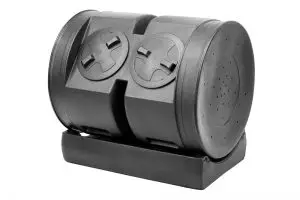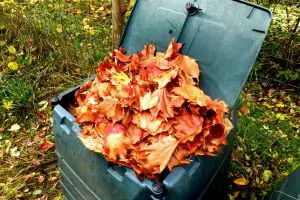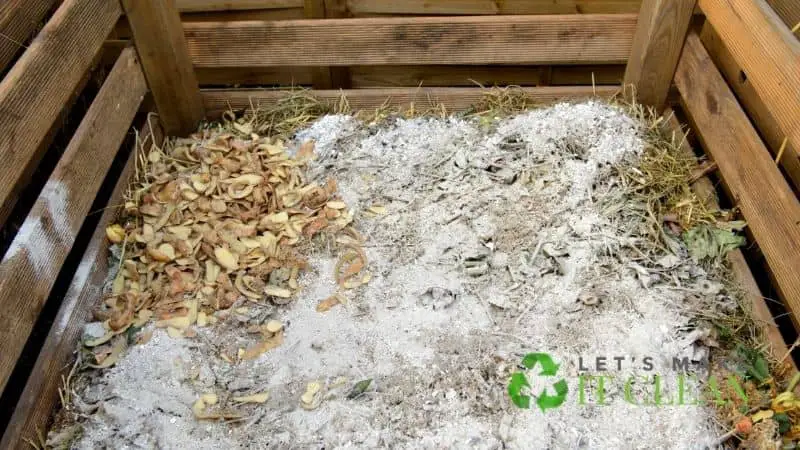We have the best tips to help you reduce food waste. We’ll cover proper planning tips, sharing the excesses, and other uses besides eating such as composting.

Nearly a third of all produce in the world becomes food waste. That’s approximately 1.3 billion tons of wasted food each year. Not surprisingly, industrialized nations like the United States have more food wastage than developing ones.
Quick Navigation
- Where Food Is Wasted
- 15 Ways How You Can Waste Less Food
- 1. Shop Smart
- 2. Practice FIFO
- 3. Freeze Them
- 4. Plan a Week’s Grocery List
- 5. Use Leftovers
- 6. Create a Waste Log
- 7. Eat Seasonal and Local
- 8. Make Soups, Desserts, and Smoothies
- 9. Understand Product Labeling
- 10. Zero-Waste Cooking
- 11. Share Excesses
- 12. Food Bank Donations
- 13. Use Scraps as Animal Feeds
- 14. Compost Your Kitchen Scraps
- 15. Pamper Yourself
- What Else Contributes to Food Waste?
- What Types of Food Get Wasted Most?
- Conclusion
Discarding edibles doesn’t only waste money. Food waste gets used in landfills, where it decomposes, causing greenhouse gas emissions (methane production). Hence, discarding food waste leads to climate change. It also leads to excessive water loss.
Where Food Is Wasted
We lose food at numerous places, right from production points to the consumer level.
Retail Businesses
Retail stores are among the leading in food wastage. In 2010, for instance, US retail stores recorded food wastage estimated at 43 billion pounds! This is quite surprising since, in 2016, 12.3% of American families had food insecurity.
Most food wastage in retail stores is from perishables like baked goods, meat, seafood, farm produce, and ready meals. According to USDA estimates, supermarkets lose an average of $15 billion annually to unsold vegetables and fruits alone.
Unfortunately, some view wastage practices amongst retailers as great business strategies. Examples of the leading factors of food loss in retail centers include;
- Overstocking products
- Expectations of cosmetic perfection of vegetables, fruits, etc.
- Oversized packages
- The availability of cooked products until closing
- Outdated seasonal products
- Due ‘sell by’ dates
- Damaged goods
- Excessive ordering of unpopular foods
- Understaffing
Today, only 10% of edible wasted gets recovered annually in the US. Factors preventing food recovery include;
- distribution and storage logistics
- liability concerns
- Money required for obtainment, collection, packaging, and product distribution
The Good Samaritan Food Donation Act of 1996 offers legal liability protection to food donors and receivers. Besides, it offers participating businesses tax benefits. Still, the awareness and belief in the benefits this act provides are low.
Institutions and Restaurants
US restaurants produce approximately 22-33 billion pounds of wasted food every year. Institutions encompassing schools, hospitals, and hotels generate about 7-11 billion pounds in the same period.
About 4-10% of food bought by restaurants gets wasted before reaching consumers. Factors causing wastage in restaurants include;
- Oversized portions
- Rigid chain store management
- Extensive menu options
A study by Cornell University’s Food and Brand Lab, restaurant dinners don’t eat about 17 percent of their meals. Of this, 55 percent gets left at these restaurants. This is partially resulting from the significant increase in portion sizes over the past three decades.
Notably, restaurant portions are about 2-8 times larger than FDA and USDA standard servings.
Kitchen standards and staff behavior like over-preparation, unsuitable ingredient storage, and non-use of trimmings and food scraps also lead to a significant loss.
Buffets, where everyone can eat, are incredibly wasteful, as excess food isn’t legally reusable or donatable, courtesy of health information and requirements.
It’s common to notice businesses keeping fully stocked buffets throughout business hours, which results in more wastage. It would be best for these areas to let food run out as they prepare to close.
Households
Households are the most significant contributors to food wastage. According to ReFED, US households are responsible for at least 76 billion pounds of wasted food. About 2/5 to half of all wastage happens at the consumer level, including 51-63% seafood wastage.
Each person wastes about 230 pounds of food per year (21% of their annual purchases). This costs about $1,800 per year. If you consider total mass, fresh fruits and vegetables lead to the most significant loss at consumer levels. The amount of loss of the most popular foods concerning total production is as follows:
- 22% of vegetables
- 20% of dairy
- 21% of meat
- 31% of seafood
Significant causes of household food wastage include:
Food Spoilage
About two-thirds of wasted food at home results from failure to use it before it spoils. What are some of the top causes of food going bad at home?
- Improper storage
- Absence of visibility in refrigerators
- Partly used ingredients
- Misinformed needs
Over-Preparation
The remainder (1/3) of wasted food at home comes from people cooking excessively or serving too much food.
Notably, there is a steady increase in cooking portions over time, and huge meals often have more foodstuffs than we can finish. Additionally, people usually forget to finish leftovers, thus have to throw them away.
Confusing Date Labels
Approximately 80% of Americans prematurely dispose of food because of confusing date labels. Do you understand the difference between terms such as “sell by,” “expires by,” and “best if used by?”
Did you know that ‘use by’ and ‘sell by’ dates have no federal regulation? They primarily serve as manufacturer suggestions for when a product is at its highest quality.
According to UK research, standardization of date labels and clarifying their meaning to consumers can help lower wastage by 20%.
Buying in Bulk
Have you ever bought excessive foodstuffs due to low prices and crazy promotions?
Amazing deals may prompt you to get foods that are not a common feature in your menu. Eventually, these foods end up spoiling before you entirely use them.
Poor Planning
Poor planning is a leading cause of waste production. It’s best to make informed buying choices and to plan meals. Otherwise, you’ll likely make inaccurate estimations of which ingredients and in what quantities you’ll need.
Unplanned delivery or restaurant meals can also lead to home food spoilage before use.
15 Ways How You Can Waste Less Food
Below are the best waste reduction tips:
1. Shop Smart
Smart shopping is one of the significant contributors to minimal waste. Measure only what you require and avoid overbuying.

To lower impulsive purchasing, don’t go shopping in grocery stores due to boredom. Such shopping usually leaves you with more than you need leading to waste production. Carry a shopping list to guide your purchase.
2. Practice FIFO
This means you should eat your foodstuffs according to the order in which you bought them. The first food in should be the first out. While unpacking foodstuffs, place older products at the refrigerator’s front and have new ones at the back. This way, you’ll notice the older foodstuffs and use them before they waste away.
3. Freeze Them
A person can lower their waste by freezing excess foodstuffs before they rot. Place a list of what’s in your freezer and the time you froze each product on your freezer’s door. This eases item usage before it gets a chance to spoil. Don’t leave perishables at room temperature past two hours.
4. Plan a Week’s Grocery List
People can lower their waste if they create time to organize their meals. Have a thorough grocery list to buy only what’s necessary. Check your kitchen cupboard, fridge, and freezer to see what to buy.
When out for grocery shopping, have this list and stick to it. Don’t let promotions make you overbuy.
Numerous meal planning apps will help you keep track of your usage. Have a handwritten list near your fridge to add items as they run out.
5. Use Leftovers
Have at least a dinner every week where you don’t use fresh ingredients. Look in your fridge and cupboards for leftovers plus other foodstuffs you might overlook. For instance, yesterday’s rice is excellent for making fried rice.
Also, have an ‘eat me first’ section for quickly expiring foodstuffs.
6. Create a Waste Log
People who have a waste log know what they’re discarding to avoid the same in the future. If your waste contains the same foods:
- Please make a note to use them first
- Reduce the amount you buy
- Include them in more recipes
- Put them in your fridge or freezer
Also, noting the price of each foodstuff thrown away reminds you of how discarding food waste is expensive.
7. Eat Seasonal and Local
Fresh foodstuffs have a longer shelf life. Choosing seasonal and local produce has many benefits. Seasonal food tastes better and is cheaper than packaged products.
Local produce offers longer freshness and cuts the distance food travels, which lowers harmful emissions. It also benefits local farmers.
8. Make Soups, Desserts, and Smoothies
You shouldn’t discard foodstuffs because they don’t look their best. Convert soft fruits to smoothies or use them in desserts. Wilting vegetables are excellent for delicious bakes and soups.
9. Understand Product Labeling
Printed expiration dates have no government regulation. These don’t always concern food safety but are typically manufacturers’ opinions for the highest quality.
You can eat most foods past the use-by date if you store them properly. However, don’t ignore expiration dates. Still, if foodstuffs smell, looks, and tastes okay, you shouldn’t waste it. If something’s off, discard it.
10. Zero-Waste Cooking
Try to use all the pieces of your foodstuffs when cooking. Stems, leaves, and skins offer more nutrients. Research to discover the uses of foods you consider as wastage.

For instance, sauté cauliflower florets and stems, broccoli stalks, etc. Add meat and vegetable scraps to your homemade stocks.
Use citrus fruit zest and rinds for food flavoring. Carrot, beet, and radish leaves are mouth-watering if sautéed or incorporated raw in salads.
Minimize food waste by sharing excess stock with other people. Give your surplus foodstuffs to friends, neighbors, and co-workers. They’ll appreciate the preparation time and money you saved them.
12. Food Bank Donations
Donating excess food is an excellent way to reduce food waste while assisting the needy. For instance, India has many food banks that fight malnutrition and hunger while helping the environment. They believe making new food for the less privileged isn’t necessary. Directing the surplus to a food bank eliminates a waste problem.
13. Use Scraps as Animal Feeds
Feeding hungry animals is an exciting experience, better than discarding your kitchen and table scraps. Most farmers happily accept scraps to feed their livestock.
14. Compost Your Kitchen Scraps
It’s difficult to have zero food waste. One of the ways to reduce food waste is composting. Composting is better than letting your leftovers go to a landfill. Composting reduces the rubbish amount you present for collection.
It also provides a humus-dense fertilizer that will increase productivity in your garden. Make use of your kitchen composter. If you don’t have one yet, consider getting one.
15. Pamper Yourself
Do you want to save money while avoiding harmful chemicals in several skincare products? One way to do this is to prepare your mask or scrub at home.
Avocados contain healthy fats, vitamin E, and antioxidants. Thus, they are excellent for use as a natural face mask.
Add a little honey to overripe avocado for a soothing combination that’s great on your hair and face.
Mix coffee grounds with some olive oil and sugar for an effective body scrub. Used tea bags and leftover cucumber slices are excellent to lower eye puffiness.
What Else Contributes to Food Waste?
- Premature crop harvesting due to poverty
- Low-quality farming technology, for instance, hand plowing and harvesting
- Insufficient and inefficient market systems
- Low-quality transportation and storage facilities
- Excessive production while anticipating pest and weather attacks
- Some people believe it’s cheaper to discard food waste than reuse it. For instance, some are afraid of turning compost, investing in worms, buying compost tumblers, among other things.
What Types of Food Get Wasted Most?
Bread
You can preserve bread in your freezer. Some ways to use stale bread include making croutons, eggy bread, crumbs, or pudding together with butter.
Milk
Incorporate more milk into your fruit smoothies, béchamel sauces, or make barley or rice pudding. If your milk goes sour, make paneer or curd cheese.
Potatoes
Store potatoes in dark places. One way to conserve Cook and freeze an old stock. Make fishcakes, potato cakes, or gnocchi using leftover mash.
Slice and sauté par-boiled potatoes for a quick meal. Roast some to make potato wedges.
Cheese
If your cheese grows mold, scrape off affected regions and cook the rest. Making cheese sauce is effortless. Prepare a béchamel and put cheese leftover scraps of any kind. Freezing also lengthens cheese’s life.
Fruits and Vegetables
Store groceries in cool, well-ventilated, dark places to lengthen their shelf life. Clean and dry groceries and before storage.
Conclusion
One person isn’t a significant environmental threat. However, it’s still crucial that each person takes steps in reducing their carbon footprint. Our tips above are excellent planet-saving strategies and household waste cutting ways.
Finding ways to lower the amount of food waste has substantial individual implications and promotes better food security.
Even one change to your shopping, cooking, and food consumption ways reduces your impact on the environment. With a little effort, you can drastically slice your food wastage, save time and money, and conserve nature.













